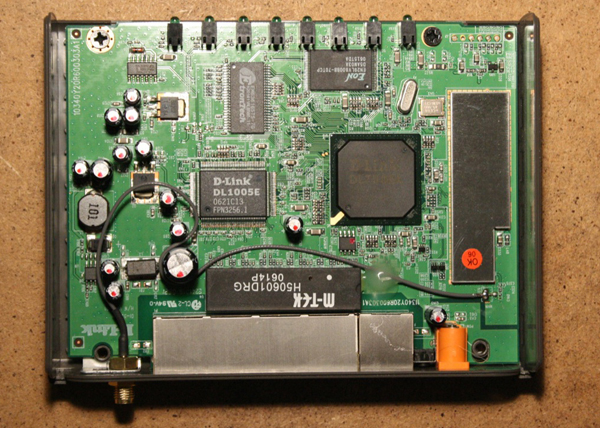Router SoC 101
Do you ever wonder what goes on inside a router? In this article, we take a close look at the SoCs inside of them, which help us manage and maintain our connected lives.
Chipsets
Chipsets
The landscape of networking device manufacturers has changed drastically within the past five years. The big names—Ralink, Ubicom, Atheros—are gone, absorbed by bigger companies. The ground is now held by two giants: Broadcom and Qualcomm. A relative newcomer to the field, MediaTek, is holding its own through the strength of acquisitions. Smaller manufacturers like Marvell and Quantenna have also introduced SoCs used in many mid- and high-end routers, while the networking division of RealTek supplies D-Link and Huawei with chips.
In 2015, there were some new technologies that affected the giant-dominated line-up, including 5G Wi-Fi Wave 2, 4x4 and 8x8 MU-MIMO. All of the players have exciting offerings, and some of the smaller companies (Quantenna, specifically, with its 10G SoCs) had a lead on Broadcom and Qualcomm at CES 2015.
Get Tom's Hardware's best news and in-depth reviews, straight to your inbox.
-
bwhiten Uhhhh...Those first pictures are not "schematics". They are CAD renderings of the box and main board at best, but definitely not schematics.Reply -
EdJulio ReplyUhhhh...Those first pictures are not "schematics". They are CAD renderings of the box and main board at best, but definitely not schematics.
Thanks, bwhiten. Updated the caption...
-
bit_user Nice article!Reply
Small, irrelevant fact: MIPS was once owned by SGI and used in their servers and workstations. They even used a MIPS CPU in the N64, which they designed for Nintendo. In fact, that was largely the outcome of a previous (if not the first) wave of VR hype. But, I digress...
Also, most people consider ARM to be RISC. Or, at least as much as anything is, these days. Indeed, the name once stood for Advanced RISC Machines.
But I didn't know what MIPS originally stood for, so thanks for that. I wonder whether or how long that remained true of their architectures. -
EdJulio Reply17548227 said:Nice article!
Small, irrelevant fact: MIPS was once owned by SGI and used in their servers and workstations. They even used a MIPS CPU in the N64, which they designed for Nintendo. In fact, that was largely the outcome of a previous (if not the first) wave of VR hype. But, I digress...
Also, most people consider ARM to be RISC. Or, at least as much as anything is, these days.
Thanks! I'll share this with Gene! Cheers!!! -
bit_user Reply
Thanks, but I did say it was irrelevant. It really has no bearing on the routers using these chips.17548234 said:Thanks! I'll share this with Gene! Cheers!!! -
GeneFabron ReplyNice article, is there any more on how tech works? Like cpu and gpu?
Hi QuangT, we have a Wireless Routers 101 http://www.tomshardware.com/reviews/wireless-routers-101,4456.html and a PSUs 101 http://www.tomshardware.com/reviews/power-supplies-101,4193.html article, and there will be more coming soon! -
Gabriel_1965 Question: I've seen a router with 72 cores would that be made to be a 72 core pic and I could use the cores for multi ore computing?Reply
